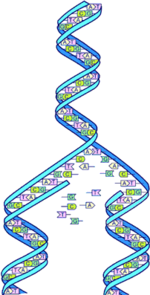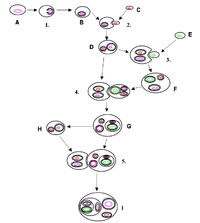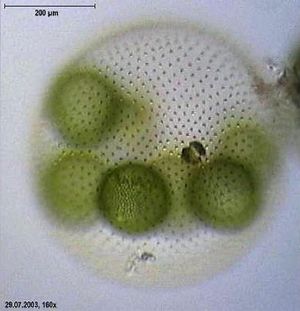تاريخ الأرض

تاريخ الأرض هو ملخص لأهم الأحداث والمراحل الأساسية في التقدم والتطور الذي حدث على كوكب الأرض منذ تشكله حتى الوقت الحالي. عمر الأرض هو 4.5 بليون سنة (4,540,000,000 سنة),[1] المناظر لحوالي ثلث عمر الكون ، ويعكس التغيرات الجيولوجية و الحيوية الهائلة التي حدثت في تلك الفترة الزمنية. أسهمت جميع فروع العلوم الطبيعية تقريبا في فهم الأحداث الرئيسي التي مرت على الأرض في الماضي ، ومعظم النظريات العلمية الحالية سترد أدناه.
Hadean and Archaean
عملية التمايز
وهي تحول الأرض من كتلة تتكون من مواد مختلطة بطريقة عشوائية ينقسم من الداخل إلى أغلفة متحدة المركز تختلف عن بعضها فيزئياَ وكيمائياً. وقد حدث التمايز مبكراً في تاريخ الأرض, حيث كان كوكباً ساخناً مما أدى إلى أنصهار مكوناته. وقد إصطدمت الأرض عند بداية تكونها بجسيمات كوكبية أكبر منها تحمل كمية كبيرة من طاقة الحركة تحولت إلى حرارة. ويعتقد أن إصطدام كوكب المريخ مع الأرض بسرعة كبيرةأدى إلى إنصهار معظم ما تبقى من مادة ليكون كوكب الأرض الإبتدائي.
نشأة النظام الشمسي

Origin of the Earth's core and first atmosphere

نشأة المحيطات والغلاف الجوي
إختلف الجيولوجيون في أصل مياه المحيطات والغلاف الجوي فمعظمهم يرجعها إلى ارض نفسها حيث تكونت المياه والغازات أثناء عمليات التسخين والتمايز, وأن الماء موجود أصلاً في بعض المعادن كأكسجين وهيدروجين مرتبطان أصلاً في تلك المعادن, وأثناء تسخين الأرض وإنصهار مكوناتها إنطلق بخار الماء لتحملها الصهارات إلى السطح وتنطلق أثناء النشاط البركاني. وهكذا فالغلاف الجوي الأولي للأرض مختلف عن الغلاف الجوي الحالي الذي يتكون أساساً من النيتروجين والأكسجين وبعد بدء الحياة ونتتجية عملية البناء الضوئي التي قامت بها الطحالب بدأ التراكم في الغلاف الجوي ليصل تدريجياًإلى نسبته الحالية.
أول القارات
بعد عملية التمايز في أغلفة الأرض مباشرة, إستمر تصاعد الصهارة من باطن الأرض إلى السطح لتبرد وتتصلب وتكون قشرة الصخور, وتكرر إنصهار القشرة الإبتدائية وتصلبها مراراً لتسمح للمواد الخفيفة الأقل كثافة لتطفو نحو السطح لتكون النواة الأولى للقارات.
نشأة الحياة


Proterozoic eon
تطور الأكسجين

Origin of eukaryotic cells and the three domains of life

الأرض وتكون طبق الاوزون
حياة متعددة الخلايا

Rodinia and other supercontinents
Late Proterozoic climate and life
Paleozoic era
استعمار الأرض


الدهر الحديث
التطور البشري
الحضارة

الأحداث الأخيرة

انظر أيضا
- Timeline of the Big Bang
- Geologic time scale
- التاريخ التطوري للحياة
- تسلسل زمني للتطور
- Detailed logarithmic timeline
- تاريخ طبيعي
- تاريخ العالم
- End of civilization
- Timetable of the Precambrian
- التاريخ الجيولوجي للأرض
- أساسيات الجيولوجيا الفيزيائية
Sources & referencesملاحظات
الأدب
وصلات خارجية
|

